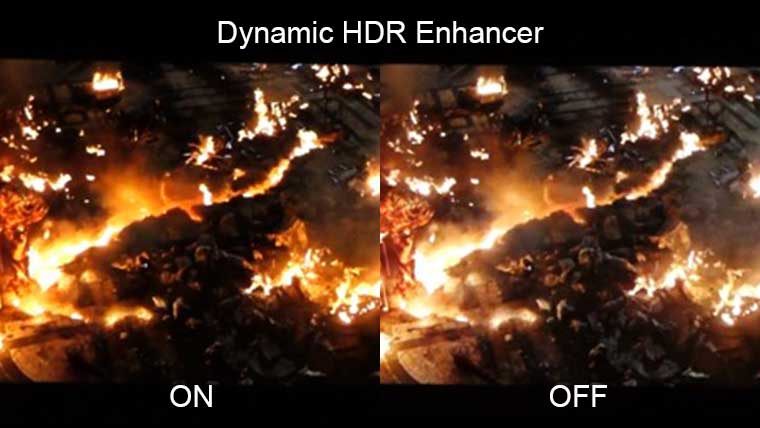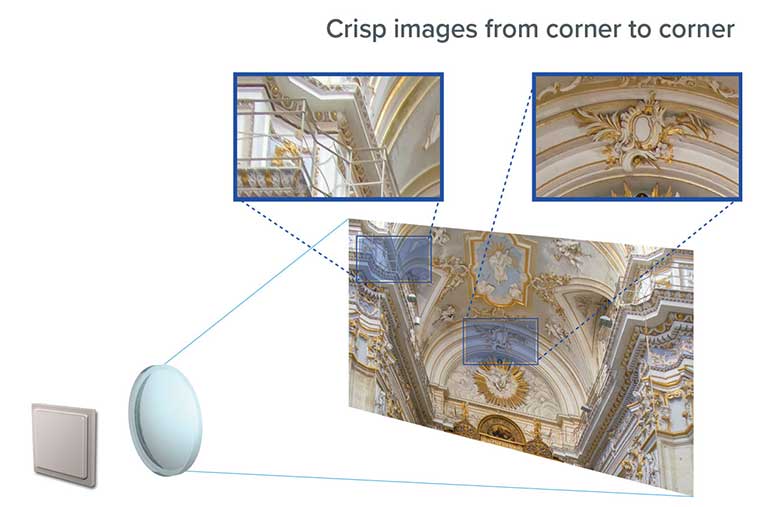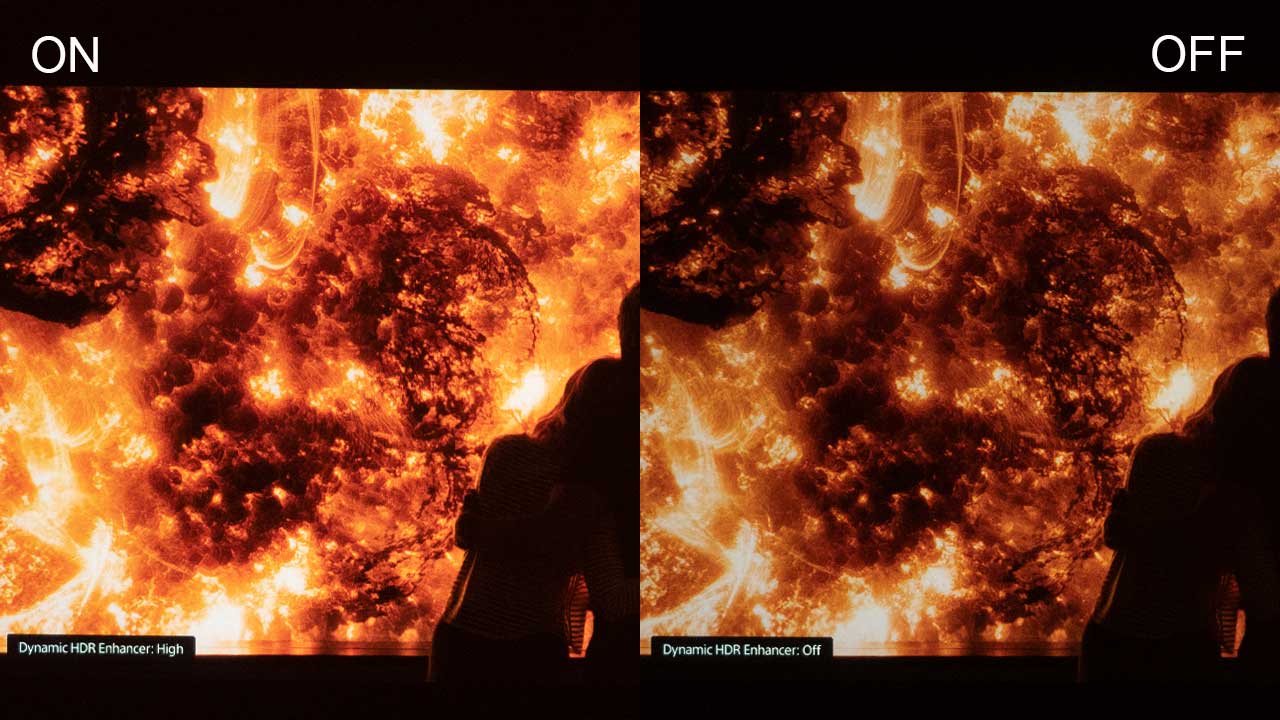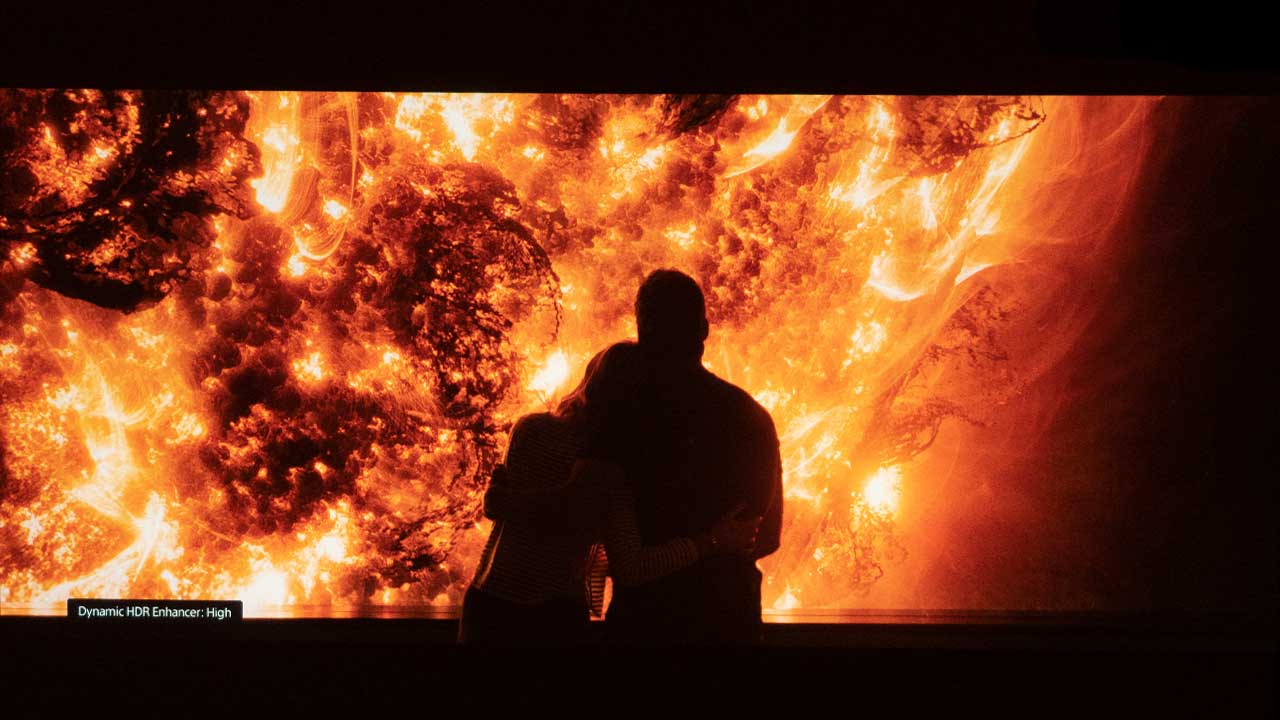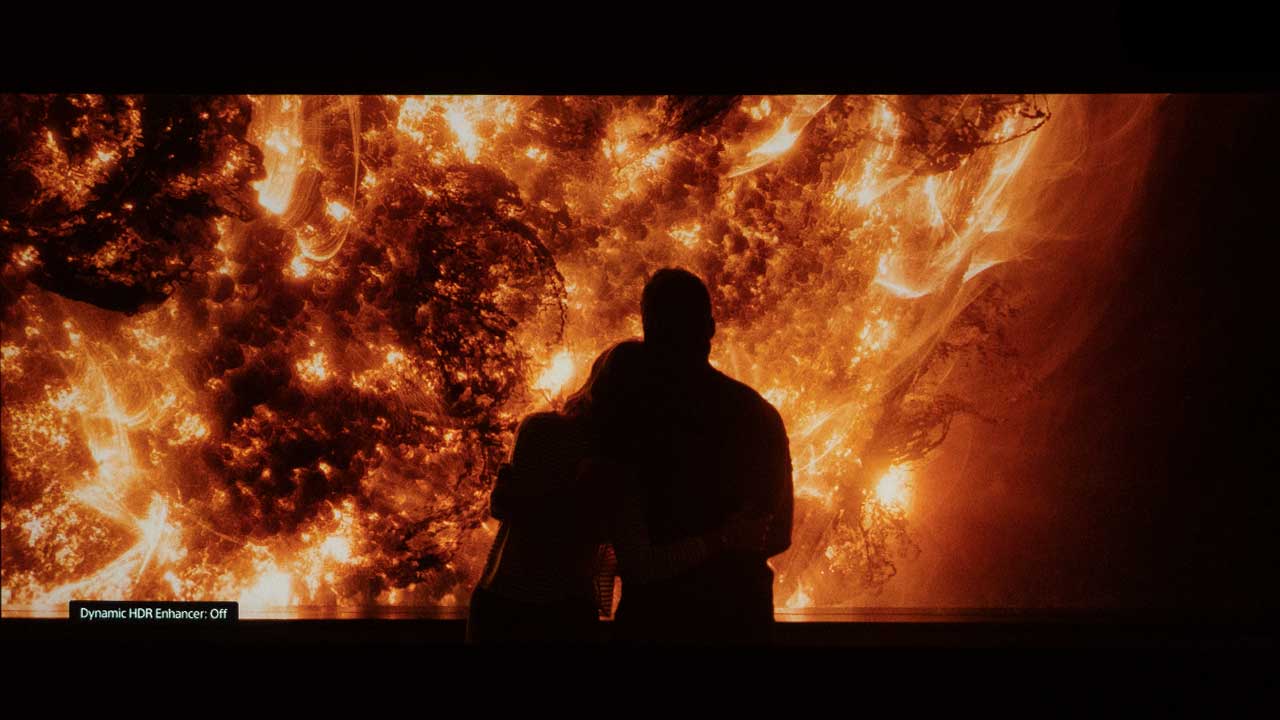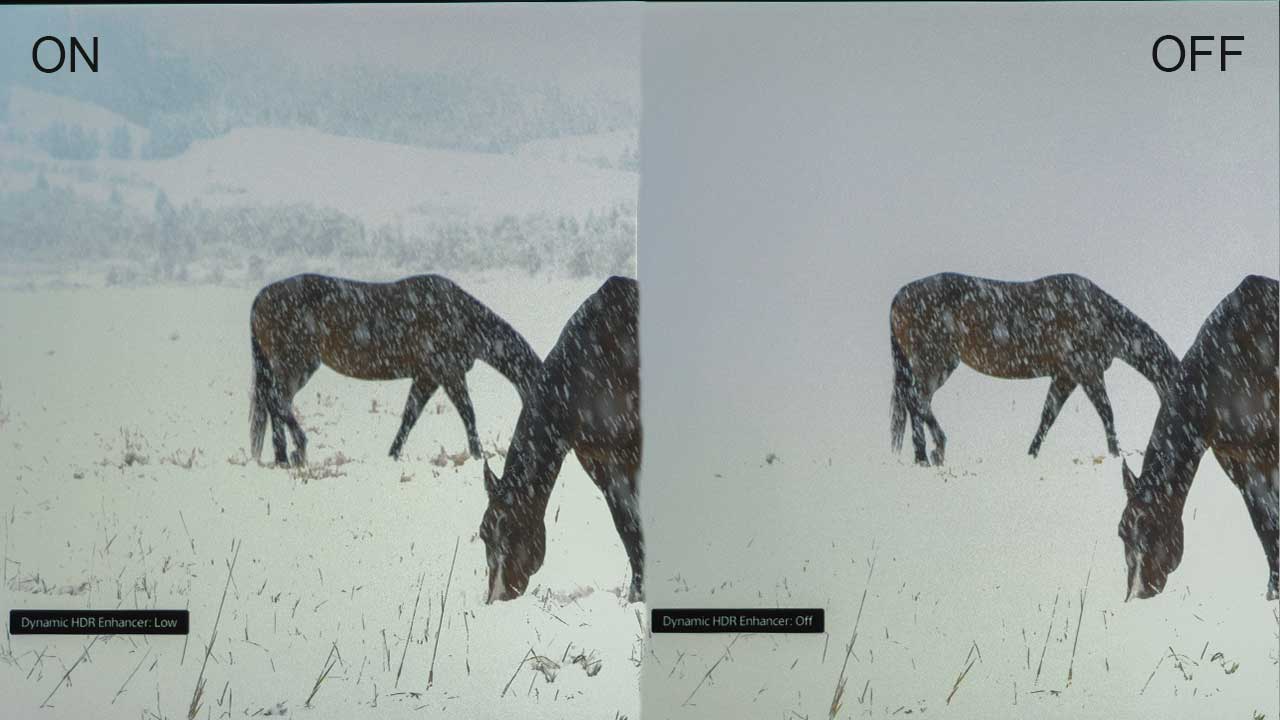Sony has a habit of hiding major improvements under obscure names. The VW915ES along with the VW715ES and GTZ380 has a new feature called HDR Contrast Enhancer. By utilizing a version of Sony’s X1 processor optimized for projection, these are the first Sony projectors that are able to measure HDR content frame by frame for precise dynamic tone mapping of HDR10 content.
There is a variety of information embedded in HDR content that an HDR display uses to make picture adjustments. First, there is an HDR Infoframe which tells the video display to switch to the appropriate HDR mode. Next is metadata which a display can use to help tone map HDR content. The two pieces of metadata that the projector’s video processor uses for HDR tone mapping are:
- MaxFALL (Maximum Frame--Average Light Level) average brightness of the brightest frame in the entire clip. Authoring guidelines state that this should not exceed 400 nits.
- MaxCLL (The Maximum Content Light Level) which is the brightest pixel in the entire clip.
The average brightness of most HDR video frames is usually much less than 400 nits with a few peak highlights (sparks, flame tips, reflections) reaching up to 10,000 nits. Let’s discuss why tone mapping is needed.
HDR consumer content (4K blu-ray and streaming) is mastered for playback on a flat panel, not a projector, so it’s produced at a variety of brightness levels ranging from 1,000 nits (292 fL) to 4,000 (1167fL) nits.
Most 4K HDR capable projectors can only deliver between 100 nits (29fL) and 200 nits (58 fL). This means no HDR compatible Home Theater projector can reproduce all brightness found in consumer HDR content.
As a result, HDR projectors utilize tone mapping which is a compromise between maintaining bright highlight details and delivering full screen brightness. When the HDR info frame is detected, most HDR projectors switch to HDR mode with a fixed tone map. It is basically one size fits all which hurts HDR performance.
Last year companies like JVC began introducing projectors with auto tone mapping which automatically adjusts the projector’s HDR settings (tone mapping curves) to try to optimize HDR10 image quality. The goal was to better utilize the projector’s brightness capabilities based on the HDR content being shown.
Since the MaxFALL/MaxCLL metadata is based on the average brightness of the brightest frame and brightest pixel in the movie, certain scenes with lower than average frame levels can still look way too dark.
In many cases, the metadata is missing or incorrect so the projector might not have the right information to work with. Also, since the same embedded metadata (MaxCLL/MaxFALL) is applied throughout the entire movie, sometimes the tone mapping decisions made by the projector can be a little off. Higher end LCD and OLED TVs have been able to measure the HDR content frame-by-frame to generate accurate metadata dynamically for years.
Last summer to further improve the HDR performance of their projectors, JVC added the capability to dynamically measure HDR metadata to their higher-end D-ILA projectors like the NX5, NX7, and NX9. This year, Sony is introducing that capability as well.


